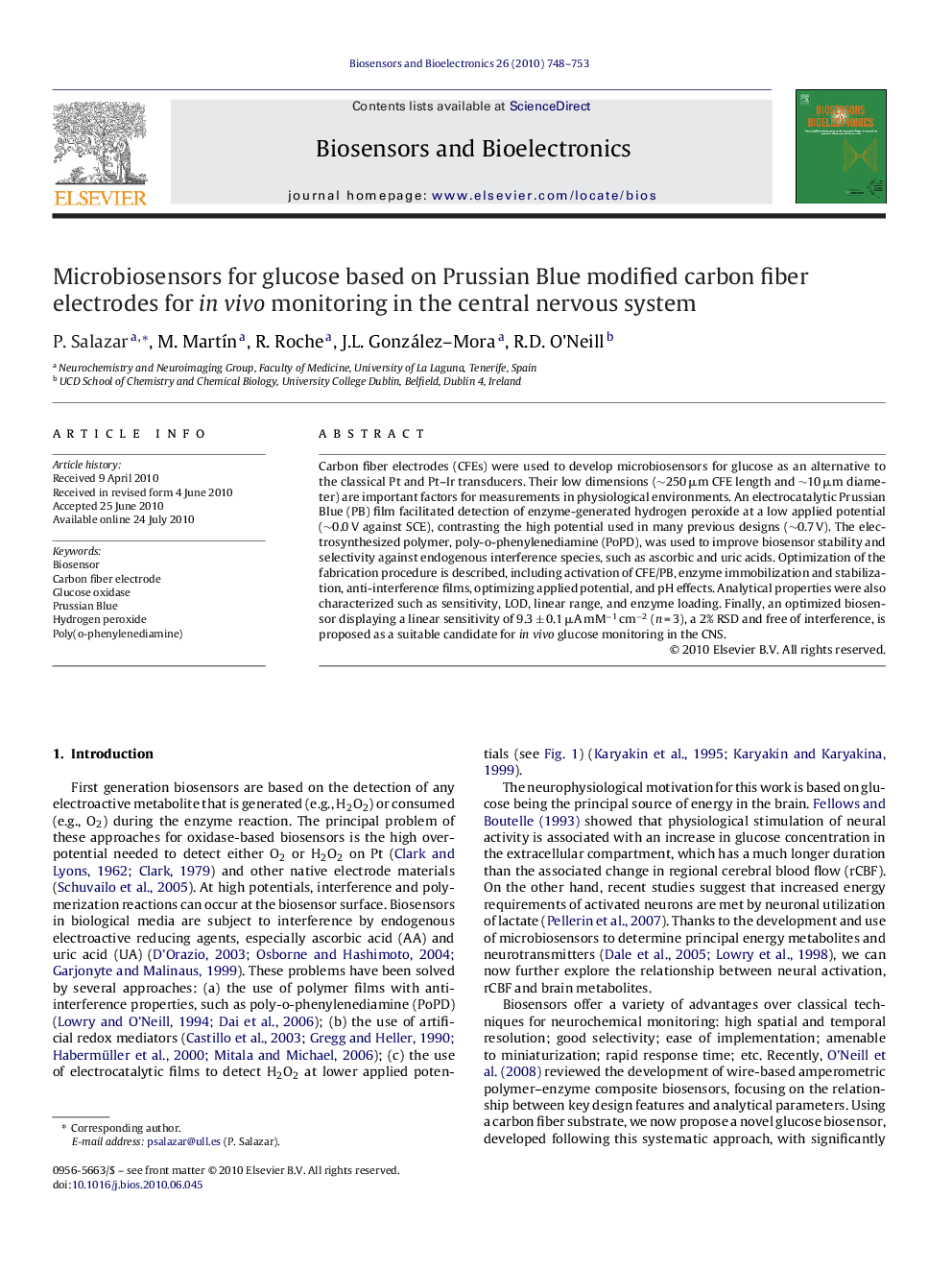| Article ID | Journal | Published Year | Pages | File Type |
|---|---|---|---|---|
| 868602 | Biosensors and Bioelectronics | 2010 | 6 Pages |
Carbon fiber electrodes (CFEs) were used to develop microbiosensors for glucose as an alternative to the classical Pt and Pt–Ir transducers. Their low dimensions (∼250 μm CFE length and ∼10 μm diameter) are important factors for measurements in physiological environments. An electrocatalytic Prussian Blue (PB) film facilitated detection of enzyme-generated hydrogen peroxide at a low applied potential (∼0.0 V against SCE), contrasting the high potential used in many previous designs (∼0.7 V). The electrosynthesized polymer, poly-o-phenylenediamine (PoPD), was used to improve biosensor stability and selectivity against endogenous interference species, such as ascorbic and uric acids. Optimization of the fabrication procedure is described, including activation of CFE/PB, enzyme immobilization and stabilization, anti-interference films, optimizing applied potential, and pH effects. Analytical properties were also characterized such as sensitivity, LOD, linear range, and enzyme loading. Finally, an optimized biosensor displaying a linear sensitivity of 9.3 ± 0.1 μA mM−1 cm−2 (n = 3), a 2% RSD and free of interference, is proposed as a suitable candidate for in vivo glucose monitoring in the CNS.
